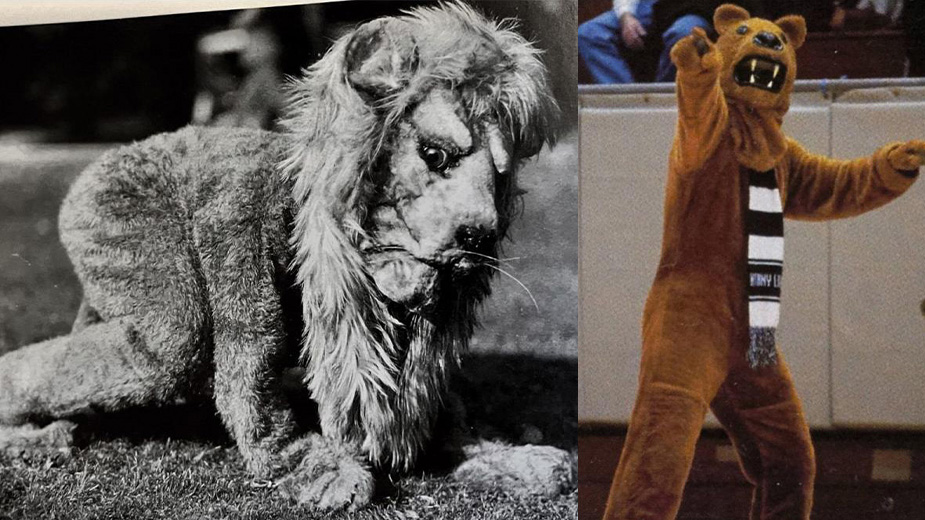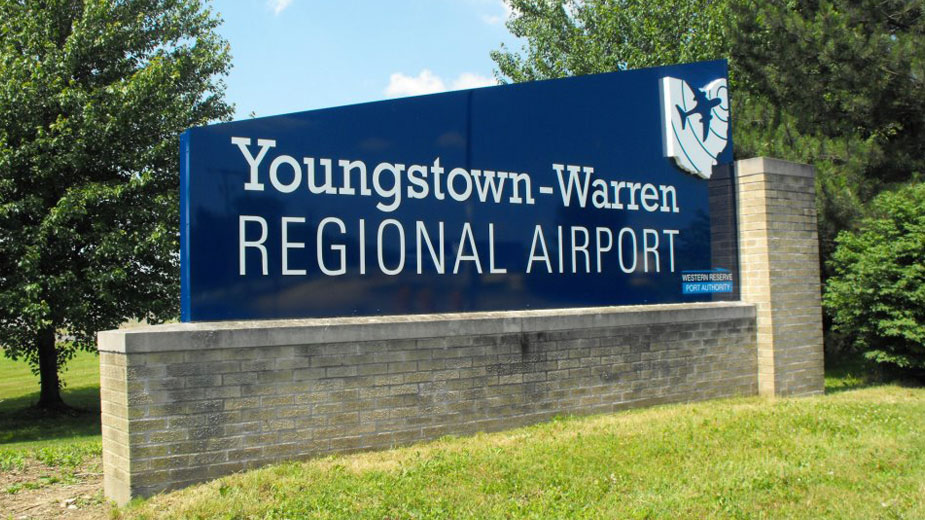How Penn State’s Mascot Evolved From Idea to Lasting Legend
UNIVERSITY PARK, Pa. – The idea for Penn State’s beloved Nittany Lion mascot was formed on this day (April 20) in 1904. As we celebrate the 119th birthday of the “Symbol of Our Best,” we pay homage to our mascot, the story of its origin and how its looks have evolved over the years and decades.
According to “The Nittany Lion: An Illustrated Tale,” written by Jackie Esposito and Steven Herb, the mascot’s story started with a member of the Penn State baseball team in 1904. On April 20 of that year, the team was facing its toughest opponent – Princeton – on the road. As Penn State players were escorted into their rival’s gymnasium, a member of opposing team proclaimed, “See our emblem, the Princeton Tiger, the fiercest beast of them all.”
At the time, Penn State did not have a mascot, save for the unofficial “Old Coaly.” Thinking quickly on his feet in an attempt to intimidate the opposition, Penn State third-baseman Harrison “Joe” Mason responded, “Well, up at Penn State we have Mount Nittany right on our campus, where rules the Nittany Mountain Lion, who has never been beaten in a fair fight. So, Princeton Tiger, look out!”
In the years that followed, Mason was reminded of his quick-witted response and the ongoing absence of an official school mascot each time he passed through campus. On display in Old Main was the stuffed and mounted remains of what, according to legend, may have been one of the last Pennsylvania mountain lions. The animal was shot and killed in nearby Susquehanna County in 1856, by a man named Samuel Brush. Though once a common predator in the commonwealth, mountain lion numbers were rapidly dwindling throughout Pennsylvania by the mid-1800s.
Brush’s prize was preserved thanks to a local taxidermist, and went on to spend 25 years in his family’s care – primarily as a toy for his own and the neighborhood children. In the 1890s, when the last known mountain lion was reportedly killed in Centre County and the species was nearing extinction, the Brush family was urged to give the specimen to Penn State “for the sake of its preservation.” It soon became a fixture in a wildlife museum that the University’s seventh president, George Atherton, started in Old Main on the University Park campus (and is currently on display at the Penn State All-Sports Museum).
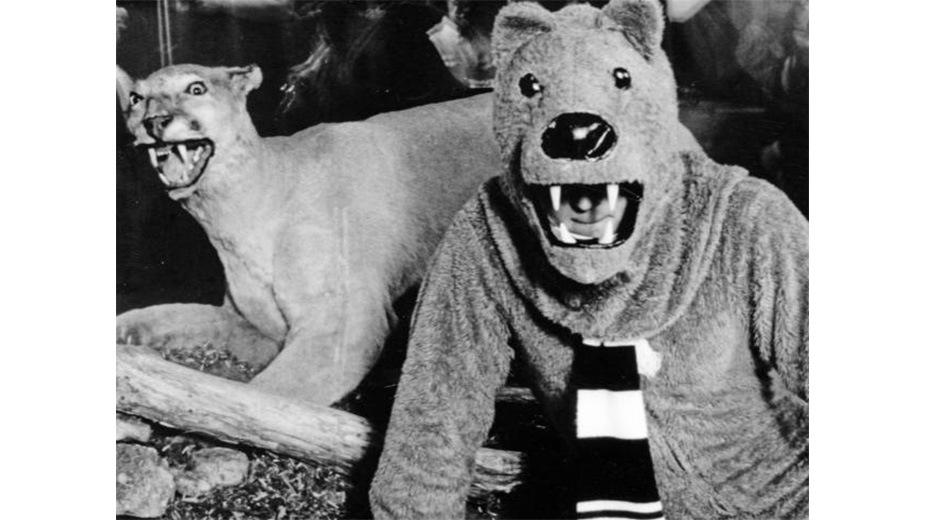
That taxidermic creature fueled Mason’s lobbying efforts. He found a platform through which to make his case in 1907, his senior year, when he and a group of students launched The Lemon, Penn State’s first humor magazine. Under a pen name, and as The Lemon’s editor-in-chief, Mason urged his fellow Penn Staters to adopt the “Old Nittany Mountain Lion” as the school’s symbol. In one essay he wrote:
Yale she loves her ancient Bulldog,
Princeton has her Tiger cruel,
Dickinson her brawny Mastiff
West Point claims the Army Mule.
Pennsylvania is the Quaker,
Michigan the Wolverine,
But where is Old Penn State?
Oh! We’re sorry to relate
She still sleeps ‘neath the shade of Nittany.
In the following issue of The Lemon, the magazine’s gossip columnist, using a pseudonym, responded:
“[The] idea of adopting the King of Beasts for our College Emblem is very pleasing to the members of the present Junior Class, and … in their coming La Vie, a beginning will be given to ‘Old Nittany’ – Penn State’s guardian Mountain Lion. And as the years roll by the veneration will increase for this guardian spirit of our College.”
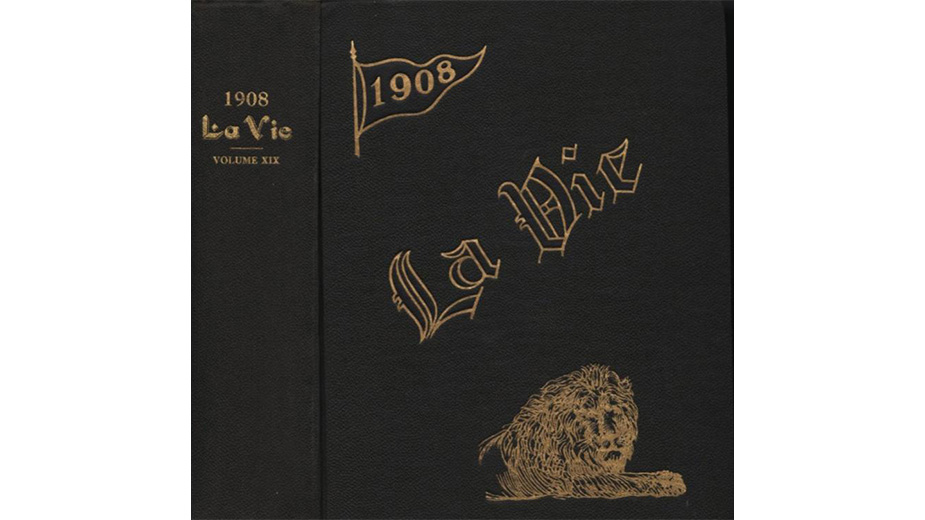
From there, the Nittany Lion took off. As promised, a lion was prominently featured on the cover of the 1908 yearbook. In the years that followed, the Lion’s Paw senior honorary society was established, glee club member James Leyden wrote “The Nittany Lion” fight song, and a “life-like Nittany Lion” was present for an early reunion of the Class of 1910.
For 18 years after first appearing on the cover of LaVie, the Nittany Lion more closely resembled an African lion than the mountain lion Mason had envisioned. In the fall of 1921, for the first time, a student donned a costume – complete with a mane – and crawled on all fours during a football game. Richard Hoffman, Class of 1923, was chosen as the first student to serve as the mascot after he portrayed the king of beasts in a campus theater production of “Androcles and the Lion.” Following Hoffman’s graduation, the Nittany Lion went dormant for four years, until Leon DeRoy Skinner, who was six feet tall and could fit into the suit, was asked to resurrect it. Skinner had taken the field at four games that season – all which resulted in losses – when an apparently superstitious Coach Hugo Bezdek ordered the mascot to be banned from the field.
“… and that was the end of the Nittany Lion, African-style,” said Skinner at the time.
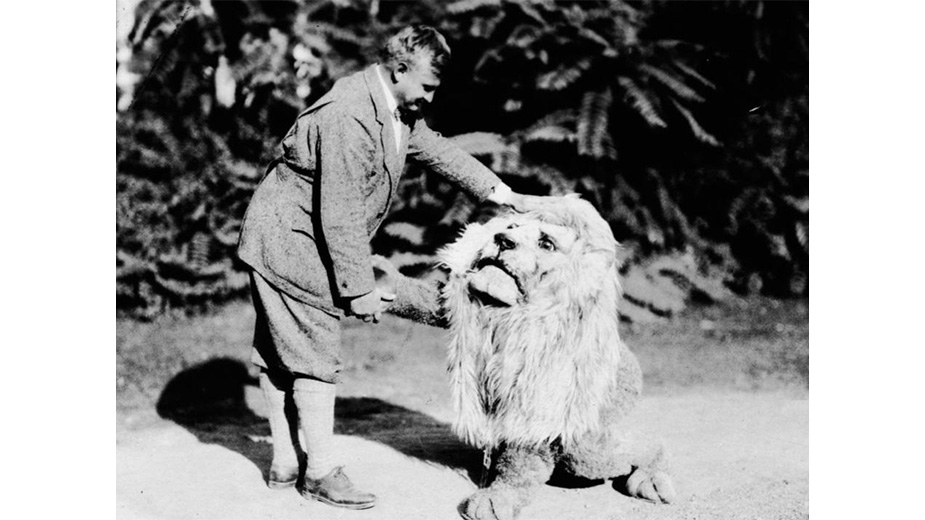
The Penn State mascot would not appear again for 12 years, making its comeback in 1939. That fall, The Daily Collegian began to solicit money to pay for a new lion suit, which took on a look more closely resembling the Nittany Lion we know and love today.
Since then, its legend has lived on. The individuals who have served as the Lion make up an exclusive group – to date, just 54 students have donned the suit as the official mascot of Penn State.
So, on his 119th birthday, join us in giving a collective wag of the ear to the Nittany Lion.
Source: Penn State University.
Pictured at top: The Nittany Lion in 1922, left, and the current mascot. (Penn State University Archives | Penn State | Creative Commons)
Published by The Business Journal, Youngstown, Ohio.
